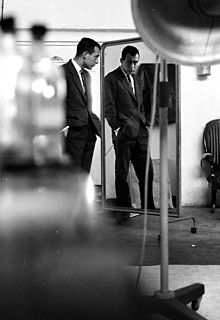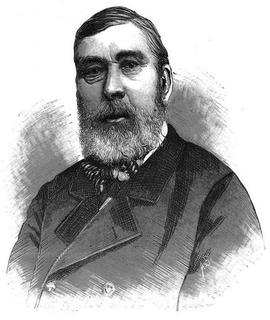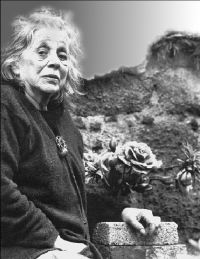Related Research Articles

Álvaro Joaquim de Melo Siza Vieira is a Portuguese architect, and architectural educator. He is internationally known as Álvaro Siza and in Portugal as Siza Vieira.

Gare do Oriente, or alternately, the Lisbon Oriente Station is one of the main Portuguese intermodal transport hubs, and is situated in the civil parish of Parque das Nações, municipality of Lisbon.

Early architectural photographers include Roger Fenton, Francis Frith, Samuel Bourne (India) and Albert Levy. They paved the way for the modern speciality of architectural photography. Later architectural photography had practitioners such as Ezra Stoller and Julius Shulman. Stoller worked mainly on the east coast of America, having graduated with a degree in architecture in the 1930s. Shulman, who was based on the West Coast, became an architectural photographer after some images that he had taken of one of Richard Neutra's houses in California made their way onto the architect's desk.
Rigoberto Romero Carmona was a Cuban photographer.
Joaquín del Palacio (Kindel) was a Spanish photographer who was born in Madrid in 1905 and died in Madrid in 1989. He changed his name to Kindel to adapt to the foreign names that were starting to work in Spain and so look modern too: KIN came from Joaquín and DEL was for the beginning of his last name. For him, taking pictures was "just a matter of look and shoot when he saw something he liked. And light, rather than technique".

Alberto Henschel was a German-Brazilian photographer born in Berlin. Considered the hardest-working photographer and businessman in 19th-century Brazil, with offices in Pernambuco, Bahia, Rio de Janeiro, and São Paulo, Henschel was also responsible for the presence of other professional photographers in the country, including his compatriot Karl Ernst Papf—with whom he later worked.
Juan José Díaz Infante Núñez was a Mexican architect and industrial designer.

Oriol Bohigas i Guardiola was a Spanish architect and urban planner, known for his work in the modernization of Barcelona.

Xavier Miserachs i Ribalta was a Catalan photographer. He studied medicine at the University of Barcelona, but left school to be a photographer. He exhibited his work in Barcelona from 1956. His work is reminiscent of neorealism and is representative of the years of Spanish economic recovery, 1950–1960. His photographs show him as a creator of a new image of the city and its people. In 1998 he received the Creu de Sant Jordi of the Catalan government.
Fran Silvestre Arquitectos is a studio based in Valencia made up a multidisciplinary group of architects founded in 2005 by architect Fran Silvestre.
Gianni Berengo Gardin is an Italian photographer who has concentrated on reportage and editorial work, but whose career as a photographer has encompassed book illustration and advertising.

Jean Laurent or, in Spanish, Juan Laurent Minier; sometimes simply J. Laurent was a French photographer who mostly worked in Spain.

Kati Horna, born Katalin Deutsch, was a Hungarian-born Mexican photojournalist, surrealist photographer and teacher. She was born in Budapest and lived in France, Berlin, Spain, and later was naturalized Mexican. Most of her work was lost during the Spanish Civil War. She was also one of the most influential women artists/photographers of her time. Through her photographs she was able to change the way that people viewed war. One way that Horna was able to do this was through the utilization of a strategy called "gendered witnessing". Gendered witnessing consisted of putting a more "feminine" view on the notion that war was a predominantly masculine thing. Horna became a legendary photographer after taking on a woman’s perspective of the war, she was able to focus on the behind the scenes, which led her to portraying the impact the war had on women and children. One of her most striking images is the Tête de poupée Horna worked for various magazines including Mujeres and S.NOB, in which she published a series of Fétiches ; but even her more commercial commissions often contained surreal touches

Carmen Espegel Alonso, is a Doctor of Architecture at the Escuela Técnica Superior de Arquitectura de Madrid (Spain), where she teaches Architectural Project classes representing the Espegel Teaching Unit. She has been working at her own studio since 1985 and in 2003 she founded the firm espegel-fisac arquitectos. Her reference work, "Heroínas del Espacio. Mujeres arquitectos en el Movimiento Moderno", is a theoretical and historical synthesis of the role of women in Architecture.
The National Architecture Award of Spain is an honor granted annually by the Government of Spain. It was first given in 1932, had a hiatus during the Civil War, and resumed in 1944, although it is not convened every year.

Miguel Rio Branco is a Brazilian photographer, painter, and filmmaker. His work has focused on Brazil and included photojournalism, and social and political criticism.

Christian Franzen Nissen (1864–1923) was a Danish photographer and diplomat largely active in Spain. Specialised in portrait photography and often employed by the Spanish Royal Family, he reportedly self-styled as "Photographer of Kings and King of Photographers".

Antonio Cánovas del Castillo y Vallejo, better known as Kaulak was a Spanish photographer, art critic, editor and amateur painter. His uncle was the assassinated Prime Minister, Antonio Cánovas del Castillo, hence his use of a pseudonym; the meaning of which is unexplained, although the word appears to be of Basque origin.

Francisco González de Canales is a Spanish architect, professor, critic and poet educated in Seville, Barcelona and Harvard.

The Porto School is a movement of modern and contemporary architecture in Portugal. Grounded in the teaching at the Porto School of Fine Arts and the Porto School of Architecture, it is one of the most influential architectural movements in the history of Portuguese architecture. Its main figures, Fernando Távora, Álvaro Siza Vieira, and Eduardo Souto de Moura are some of the most globally renowned Portuguese architects.
References
- ↑ "Lux - Galardonados 1993". Asociación de Fotógrafos Profesionales de España. Archived from the original on 1993.
- ↑ "Lux - Galardonados 1995". Asociación de Fotógrafos Profesionales de España. Archived from the original on 1995.
- ↑ "Lux - Galardonados 2005". Asociación de Fotógrafos Profesionales de España. Archived from the original on 2005.
- ↑ "The Royal institute of British Architects".
- ↑ "The Getty – Union List of Artist Names".
- ↑ "Professional View: Duccio Malagamba in EXIT Magazine".
- ↑ Anatxu Zabalbeascoa. "Otros arquitectos 5 - Duccio Malagamba". Del tirador a la ciudad. El País. Archived from the original on 2012.
- ↑ Secchi, Bernardo; Merlini, Chiara (1992). Il Concorso internazionale per piazza Matteotti - la Lizza. Electa. pp. 122–131. ISBN 88-435-3611-7.
- ↑ Malagamba, Duccio. "About". Duccio Malagamba Fotografía de Arquitectura.